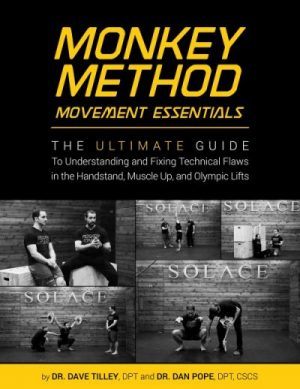We’ve all seen it before. With front squats your body stays nice and upright during warm-up sets. As the weights get heavy you notice your athletes start dumping the weight forward when they come out of the hole. The elbows drop down and with it usually the head position is lost too.
With squat cleans the same applies. When the weight is light the torso stays upright when catching the clean and as the weights increase the forward dump becomes more apparent. Check out my videos below and you can see I’m quite familiar with this phenomenon:
Now, this can happen for a variety of reasons. Keep in mind that for this article we’re assuming our athletes already have decent front rack mobility because this can be a major player. If front rack mobility is the biggest player then heavy loads shouldn’t make the lift worse. It will look bad from the start and sometimes improve as the load increases. But I digress:
1: Poor Thoracic Spine Extension Range of Motion
If you’re missing the ability to extend the thoracic spine without load then there is no way you’re going to extend well with a couple hundred pounds pulling you forward. Here is an easy assessment video you can use to determine if the thoracic spine is limited.
2: Poor Strength and Endurance in the Thoracic Extensors
Often times you’ll notice your athletes won’t have their upper back dump forward until the weights get heavy. This is a tell tale sign that your athlete has more of a strength and endurance problem and not a mobility issue. I often think that the upper back rounds at times to put the thoracic extensors into a stronger length / tension relationship and to potentially recruit some more strength from the passive structures of the spine. If you’re an athlete who does this regularly and deals with some gnarly upper back pain, you’ll know this isn’t always the best technique for health. Below are some exercises to improve this.
https://www.instagram.com/p/BNPMZs_B5xU/?taken-by=fitnesspainfree
3: Poor Starting Position
One thing I tend to see in athletes during their front squat is they like to take the bar out of the rack with a slightly flexed spine. Once the bar comes out of the rack the spine is already in a disadvantageous position. I like to get my athletes to fully extend the thoracic spine before they take the bar out of the rack. This will help ensure a more upright posture during their squats.
4: Poor Mobility Downstream
If you’re lacking mobility in the ankles and hips then it will be difficult to keep an upright torso while squatting. Make sure you’re assessing your athlete’s ankles and hips and working those accordingly.
5: Posterior Chain Dominant Strength
If you’re used to squatting like a powerlifter (Low bar, hips far back), or have a much stronger deadlift then squat then chances are you’re posterior chain dominant with your strength. The forward lean that comes out of the hole with heavy front squats is just your body attempting to get into a stronger position (By bringing the hips back and inclining the torso forward, engaging the posterior chain further). If you always train your squat with a forward lean then you’ll default to that stronger position when the weights get heavy. I recommend athletes that are having trouble with this problem drop the weights a bit in their squat and clean program and build strength in a more upright posture.
So there you have it. These are some common issues I see when athletes are having their elbows drop in heavy front squats and cleans. Also keep in mind that often several factors are present that cause elbow drop.
Want more assessment techniques and strategies to improve your lifts? Check out my latest assessment and correction digital product:
Monkey Method – Movement Essentials
The Ultimate Guide to Understanding and Fixing Technical Flaws in the Handstand, Muscle-up and Olympic Lifts
The Dreaded Elbow Drop,
Dan Pope DPT, OCS, CSCS, CF L1
